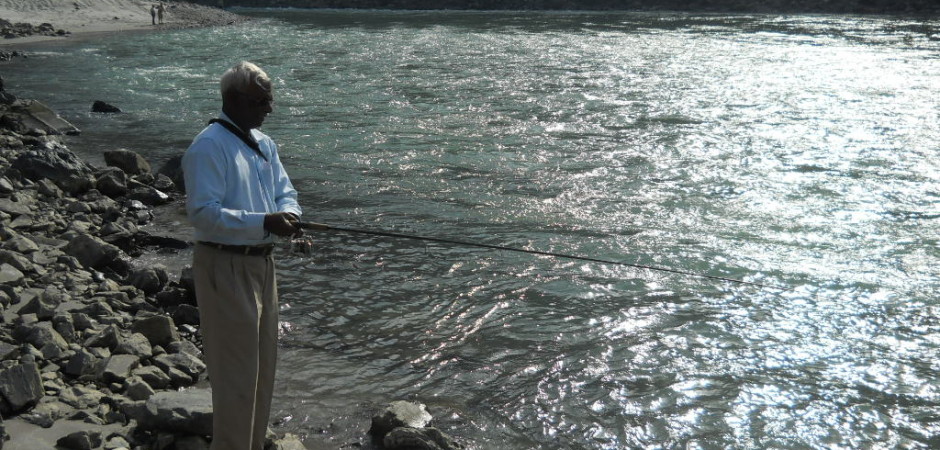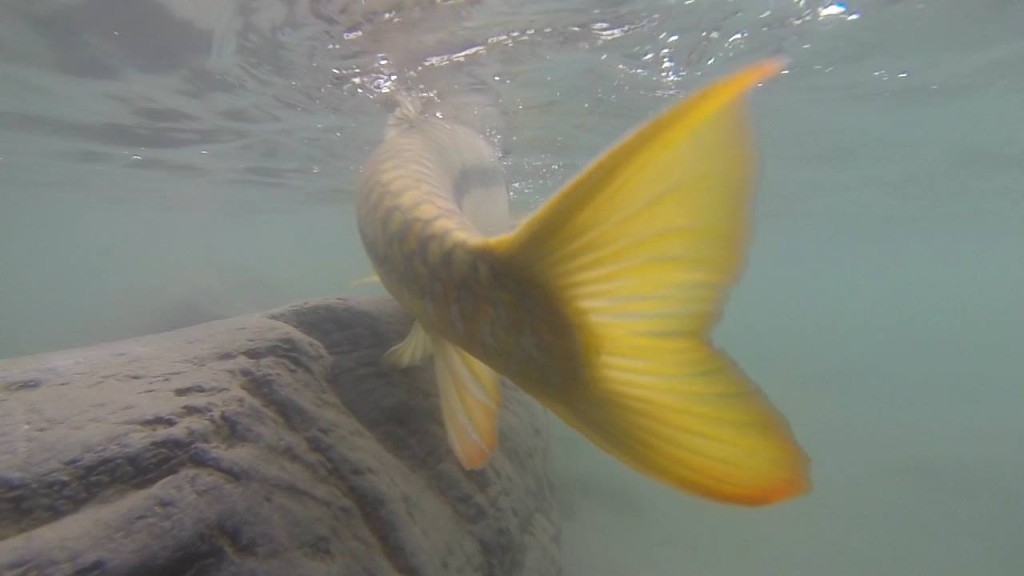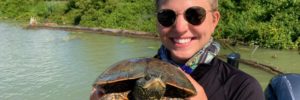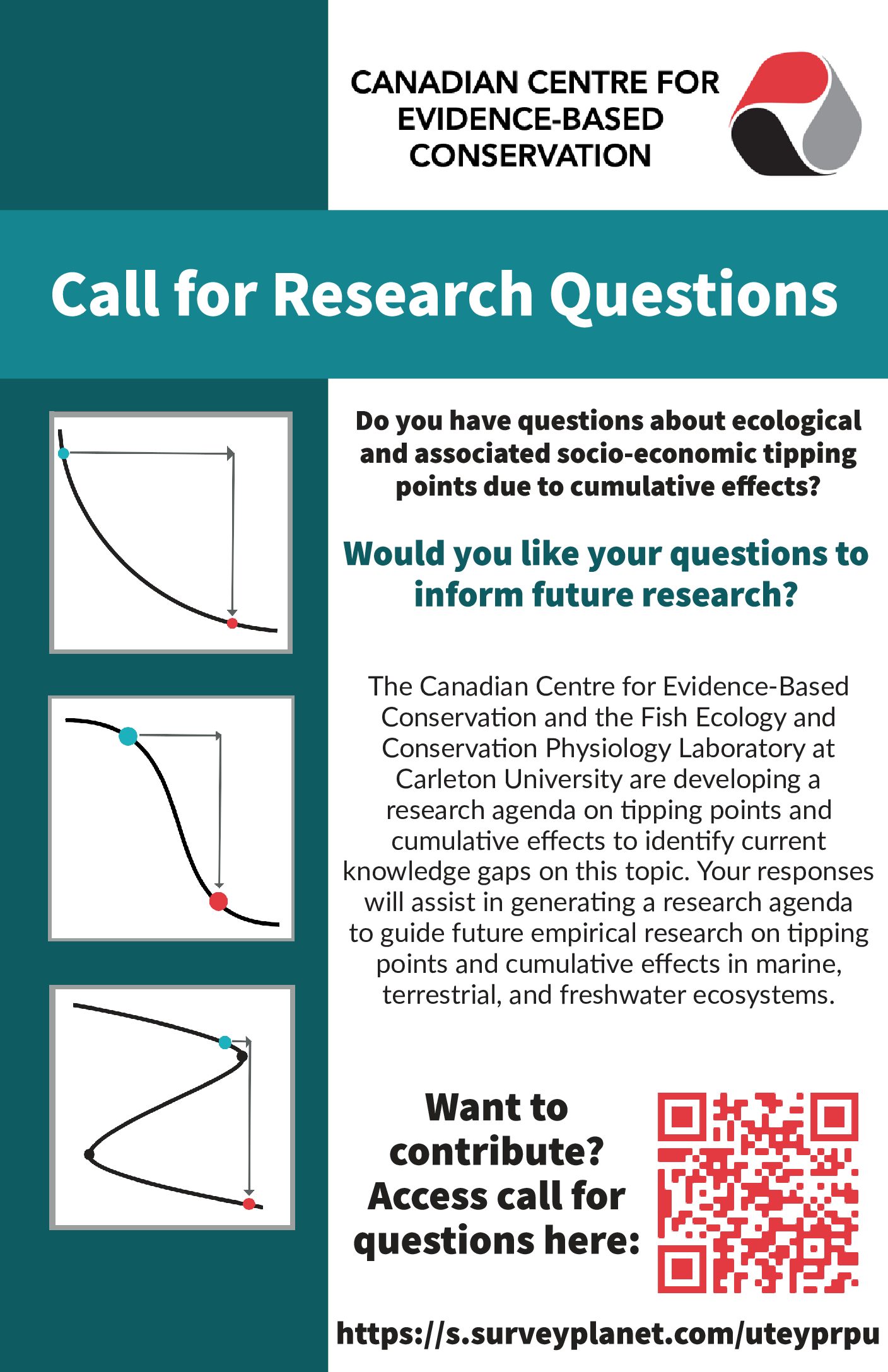Funded By
Too Big to Ignore (www.toobigtoignore.net), Mitacs Globalink, Fisheries Society of the British Isles
Research Team
Dr. Steven Cooke, Carleton University
Dr. Andy Danylchuk, University of Massachusetts-Amherst
Dr. Rajeev Raghavan, St. Albert’s College
Shannon Bower, Carleton University
With thanks also to our many and varied collaborators and supporters, including the Mahseer Trust, Coorg Wildlife Society, Wildlife Association of South India, All-India Game Fish Association, Baobab Educational Adventures, and the many anglers, stakeholders and volunteers who have engaged with us and provided invaluable input over the course of this project.
Special thanks to Sascha-Clark Danylchuk, Dr. Nishikant Gupta, Neeti Mahesh, Ambily Nair, Shyam Aiyappa, Aiyappa C.P., Dayan Mandappa, Sandeep Chakrabarti, Shine Sathvik, Naren Sreenivasan, Suman Panwar, Derek Dsouza, Adrian Pinder and Steve Lockett.
Research Summary
Anglers, fisheries managers and other stakeholders would be the first to say that recreational fisheries are like the proverbial snowflake- no two are alike. Target species, fishing gears, habitats, user groups and other social and ecological components all vary widely, and so management techniques that work for one fishery may not work well for another.
Recreational fishing is a popular activity worldwide, with between two to seven million participants generating an estimated $190 B USD in direct expenditures annually. In particular, the activity is growing in popularity in low-to middle-income countries (LMICs), where it may act to provide alternative livelihood options through tourism. Increasing attention has been paid to the recreational fishing sector of late, as a result of the recognition of the sectors’ potential impacts (which include overfishing, directional selection, habitat degradation, invasive species introductions and more), but also for the role that recreational fishing may play in the conservation of target species and their habitats. How then do we maximize the benefits gained from the recreational fishing sector while minimizing the associated risks?
In many fisheries, catch-and-release (C&R), the process of returning a fish to the water after landing (presumably unharmed), is being promoted either on a voluntary or mandatory basis as a mechanism to promote recreational fishing while minimizing impacts on fish populations. The success of this strategy, however, depends heavily on a number of factors, including:
-the physiological response of the species to a variety of angling practices (such as gear type used, duration of angling event, amount of air exposure);
-whether or not these responses result in significant levels of mortality or sub-lethal effects (impacts on individual fish that don’t necessarily lead to mortality but may compromise long-term successes, like decreased reproductive capacity or increased susceptibility to disease);
-the ability of researchers to communicate findings to fisheries managers and anglers effectively (using methods of communication appropriate to the fishery);
-and, the willingness of anglers to adopt behaviours likely to minimize any identified impacts.
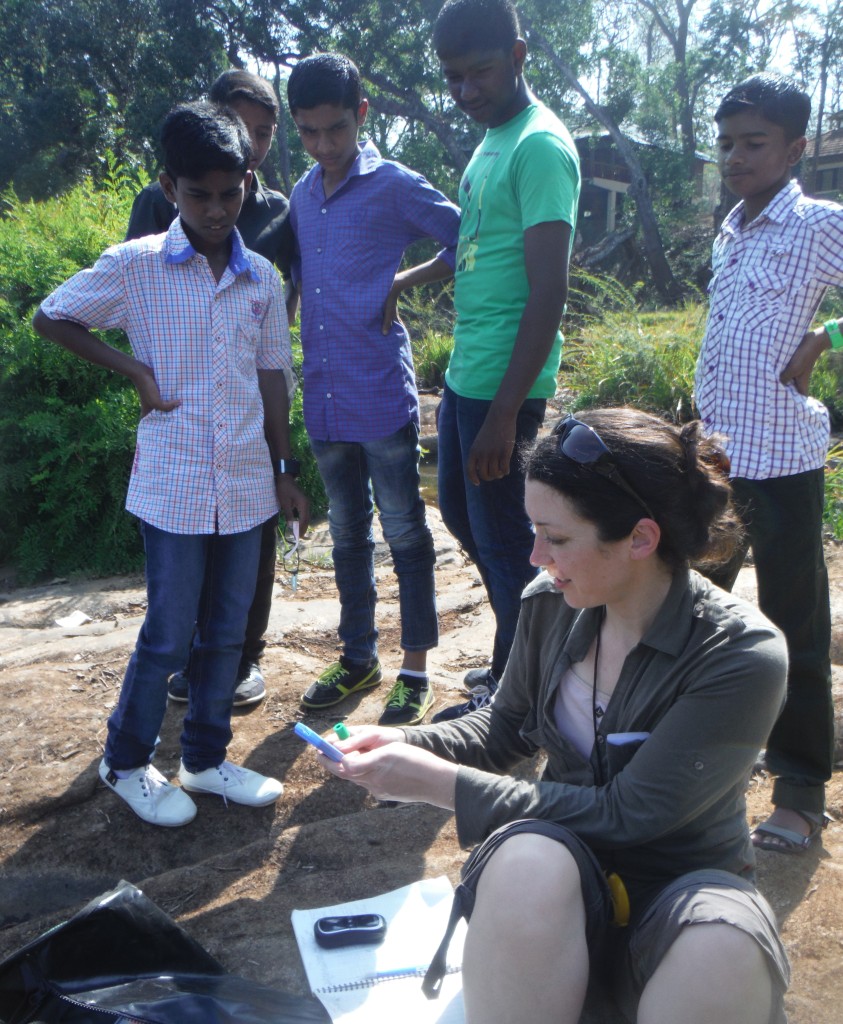
Shannon Bower running samples in the field while an audience of curious school kids helps out. Photo credit: Steve Cooke
These key factors vary widely, which implies that research studies conducted on one fishery are not necessarily applicable to others. Yet, the data available for individual recreational fisheries is sparse, particularly for those occurring in LMICs, rendering evidence-based decision making a challenge for anglers and fisheries managers. Our research project aims to address the knowledge gaps surrounding the development of C&R recreational fisheries in LMICs by surveying fisheries managers in these regions to identify key features and knowledge gaps in these fisheries, and developing an integrative (combining biological and socio-economic analyses) rapid assessment tool to evaluate the suitability of C&R management strategies at the individual fishery level. The latter goal will be accomplished using a case study of the mahseer (Tor spp.) recreational fisheries of India.
The mahseer of India are iconic, slow-growing, potamodromous cyprinids endemic to Asia that are targeted by commercial, subsistence and recreational fishers. Indian populations consist of nine identified species, five of which are endangered, including the two most popular game species Tor khudree (Deccan Mahseer) and Tor putitora (Golden Mahseer), and two of which are listed as ‘near threatened’ on the IUCN RedList.
Recreational fishing in India was first documented as early as the 1100s. In the 1970s, mahseer anglers noticed a decline in the frequency and size of their catch and took quick action to address the problem, forming angling conservation groups and coalitions that established angling camps and began collecting catch data. These groups further contributed to conservation efforts by promoting C&R and hiring local fishers and known poachers to act as guides and guards of river reaches they were responsible for. In spite of this attention however, no scientific studies prior to this project have been conducted to examine mahseer responses to C&R.
We are working to incorporate analyses of physiological responses of mahseer to C&R, target population characteristics, and socio-economic variables into an ‘option map’ that identifies potential routes for achieving desirable outcomes, namely, the ongoing viability of C&R in the mahseer fishery. The proposed framework will offer novel rapid assessment techniques that analyze the value of C&R management strategies in specific fisheries, while maintaining fluidity so as to be applicable under a wide range of circumstances.
Each recreational fishery is unique, and while no study can measure the full suite of individual fishery characteristics, rapid fishery assessments will serve to deliver essential data on key fishery variables and act to triage areas of priority for future research. The proposed framework meets an important need in recreational fisheries research that is not only applicable to C&R fisheries in LMICs, but will also be useful in industrialized regions as a component of adaptive management strategies.
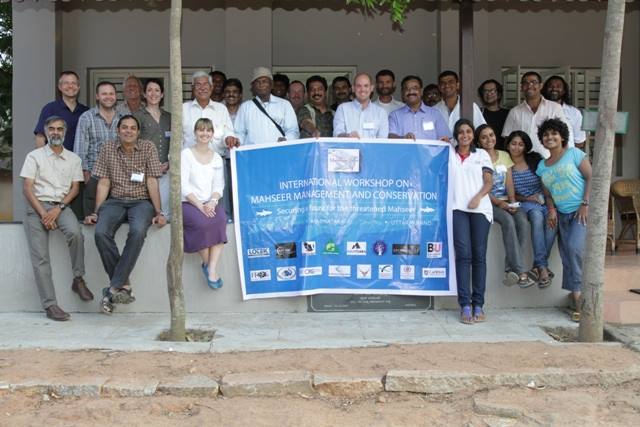
A group of international experts and stakeholders (including representatives from local and international NGOs, fisheries managers, and angling organizations) came together in Bannerghatta, Karnataka, India (March 2014) to discuss mahseer conservation and develop a research plan for the species. Photo credit: Steve Locket
Project image: The illustrious A.J.T. Johnsingh, who travelled from our southern location (Cauvery River, Karnataka) to participate in our rapid assessment and workshops on the Ganges River in Uttarakhand. Photo credit: Shannon Bower

